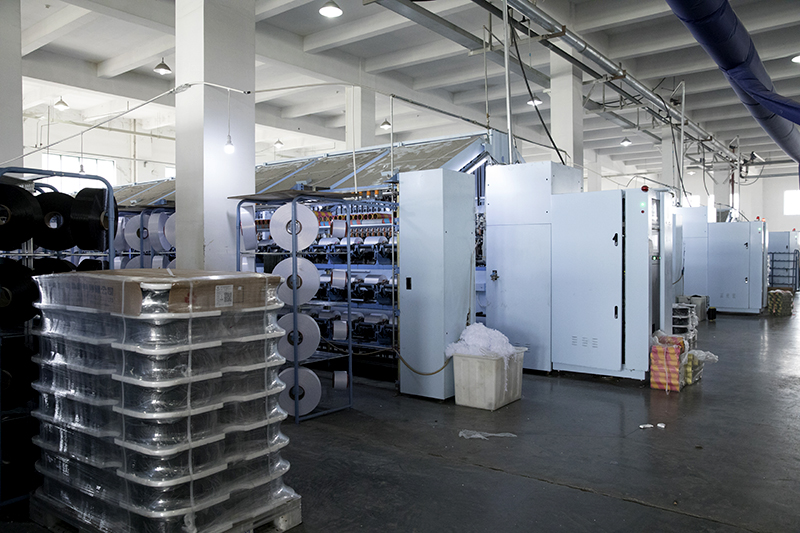Yellow Orange China 300D/96F Dty Polyester Yarn Eco-friendly Recycle Dty Yarn Fo...
See DetailsRoller is one of the key equipment for spinning, high-quality roller can spin high-quality yarn. Hangzhou Dingkai Chemical Fiber Co., Ltd. has established a quality control, quality control, quality inspection, and quality tracking system from raw materials entering the factory to finished products leaving the factory. The quality responsibility is clearly assessed. Unqualified products from the previous process must not flow into the next process, otherwise it will be detected by the next process Will be strictly assessed. All products must be inspected one by one before being put into storage, and marked and packed. In order to prevent the rollers from colliding with each other during transportation and damaging the surface of the rollers, each roller is covered with a mesh protective cover, and the products are sampled according to a certain ratio before leaving the factory to ensure the quality of the rollers.
Roller processing innovation
1. Processing technology innovation
The roller guide hole and the threading were originally two processes, which were processed by ordinary Machine tools. Through innovation, they were changed to CNC Machine tools. One clamping and one processing, which greatly improved the concentricity of the roller. The original roller surface polishing technology has greatly improved the surface finish of the roller, ensuring that there are no defects inside and outside each groove of the roller. It not only guarantees the holding force but also improves the service life of the top roller. Roller straightening is changed from manual straightening to fully automatic straightening, which eliminates the influence of manual straightening based on experience and perception, so that the rollers that cannot meet the quality requirements can be automatically removed, thereby ensuring the quality of the rollers.
2. Optimize tooth profile design
The tooth profile, tooth width and tooth depth of the front roller of the spun yarn not only affect the stability of the gripping force of the jaws on the fiber, but also affect the service life of the rubber roller and the roller groove applique. If the tooth edge is too straight, it is easy to damage the fiber, so the arc must be excessive. The arc transition at the tooth bottom is not easy to accumulate, and it is easy to clean after accumulating.

The deeper the tooth-shaped groove of the front roller is, the rubber roller is not easy to slip, the surface speed difference between the rubber roller and the roller is smaller, the holding force of the front jaw is stable, and the control effect on the beard is stronger. However, the deep grooves will cause the roller grooves to embed small dust and increase the probability of generating mechanical waves. Deeper grooves will also cause greater periodic changes in the jaw position, which may increase the unevenness of the short segments of the yarn. Therefore, according to the test, the groove depth of the spinning roller is 0.29 mm.
The roller groove is large and wide, the holding force of the front jaw is not stable, and the fluctuation is large, and the holding of the beard is unstable, which is easy to produce coarse details and mechanical waves; the roller groove is too narrow, the rubber roller is easy to slip, and the rubber roller and the roller The speed of the surface varies greatly, which affects the uniformity of the yarn evenness. Tests have shown that the grooves are different depending on the diameter of the roller, generally between 0.26 mm and 0.30 mm.
3. Pattern density of middle roller
The spinning section of the middle roller is processed with a diamond pattern. The middle roller drives the lower apron to rotate, and then the lower apron frictionally drives the upper apron to rotate. The friction force generated by the upper and lower aprons controls the movement of the strands to ensure the fiber The shift points are concentrated near the front jaws. If the lower rubber ring slips on the middle roller, and the slip rate is high, it will inevitably affect the normal movement of the strands, increase the unevenness of the yarn, and increase the details and thick sections of the yarn. The density of the diamond pattern affects the friction coefficient between the surface of the middle roller and the lower rubber ring. If the density of the diamond pattern is too large or too small, it will affect the slip rate of the rubber ring. Tests have shown that the number of teeth of the diamond pattern on the middle roller is about 32 teeth/cm2. The loop slip rate is small.